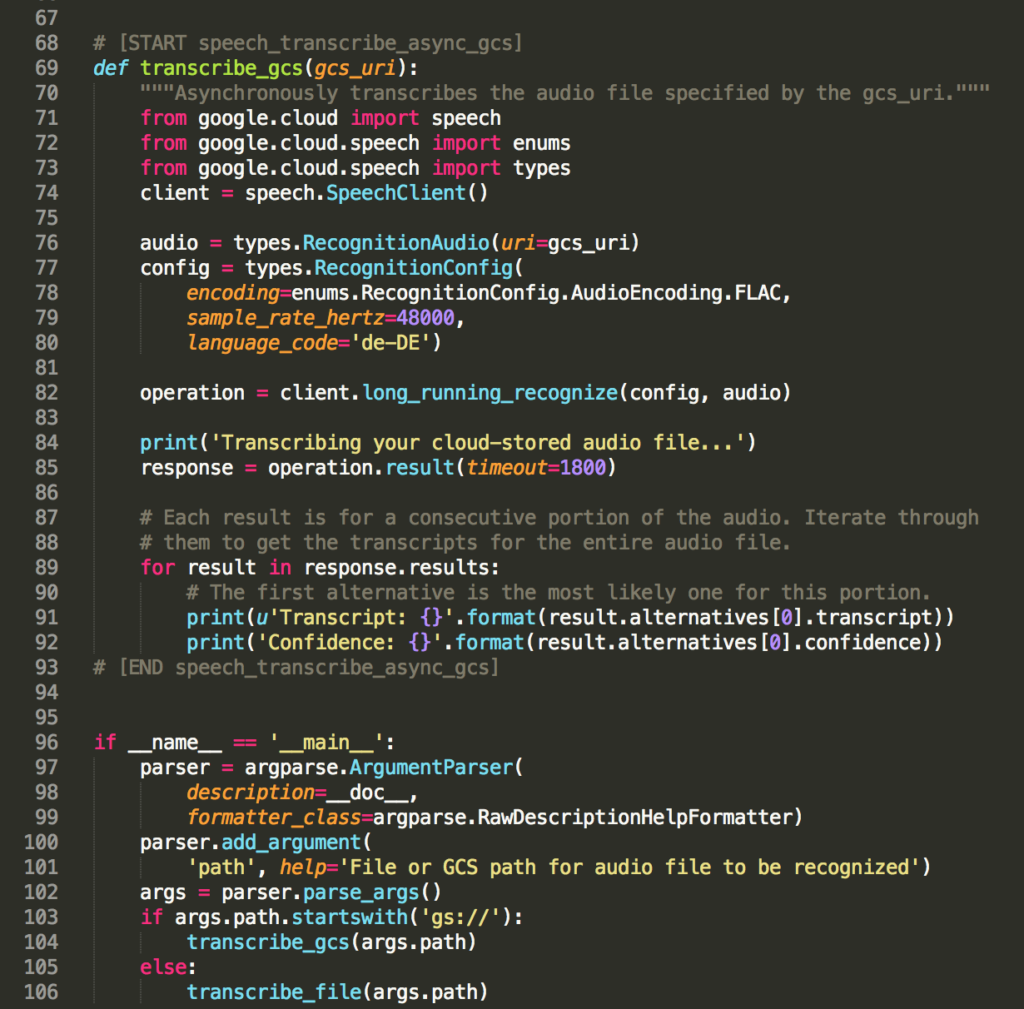
Print( "Could not request results from Google Speech Recognition service ". Print( "Google Speech Recognition could not understand audio") Print( "You said: " + r.recognize_google(audio)) # to use another API key, use `r.recognize_google(audio, key="GOOGLE_SPEECH_RECOGNITION_API_KEY")` # for testing purposes, we're just using the default API key # Speech recognition using Google Speech Recognition R.recognize_google(audio) returns a string. With Generative Fill, you can: Generate objects: Select an area in your image, then describe what you’d like to add/replace through a text prompt. Secondly we send the record speech to the Google speech recognition API which will then return the output. The audio is recorded using the speech recognition module, the module will include on top of the program. This program will record audio from your microphone, send it to the speech API and return a Python string.
GOOGLE CLOUD SPEECH API KEY INSTALL
Sudo apt-get install libportaudio0 libportaudio2 libportaudiocpp0 portaudio19-dev PyAudio 0.2.9 is required and you may need to compile that manually. You will need to install a few packages: PyAudio, PortAudio and SpeechRecognition. But this will probably work on other platforms is well. This is the installation guide for Ubuntu Linux. Make sure you have a good microphone.Īre you are looking for text to speech instead? Google Speech API v2 is limited to 50 queries per day.

The API has excellent results for English language.Ī speech recognition API offloads the logic, such that you can simply send a web request to the API, which then returns the text that was recognized.

You can simply speak in a microphone and Google API will translate this into written text. This API converts spoken text (microphone) into written text (Python strings), briefly Speech to Text. Google has a great Speech Recognition API.


 0 kommentar(er)
0 kommentar(er)
